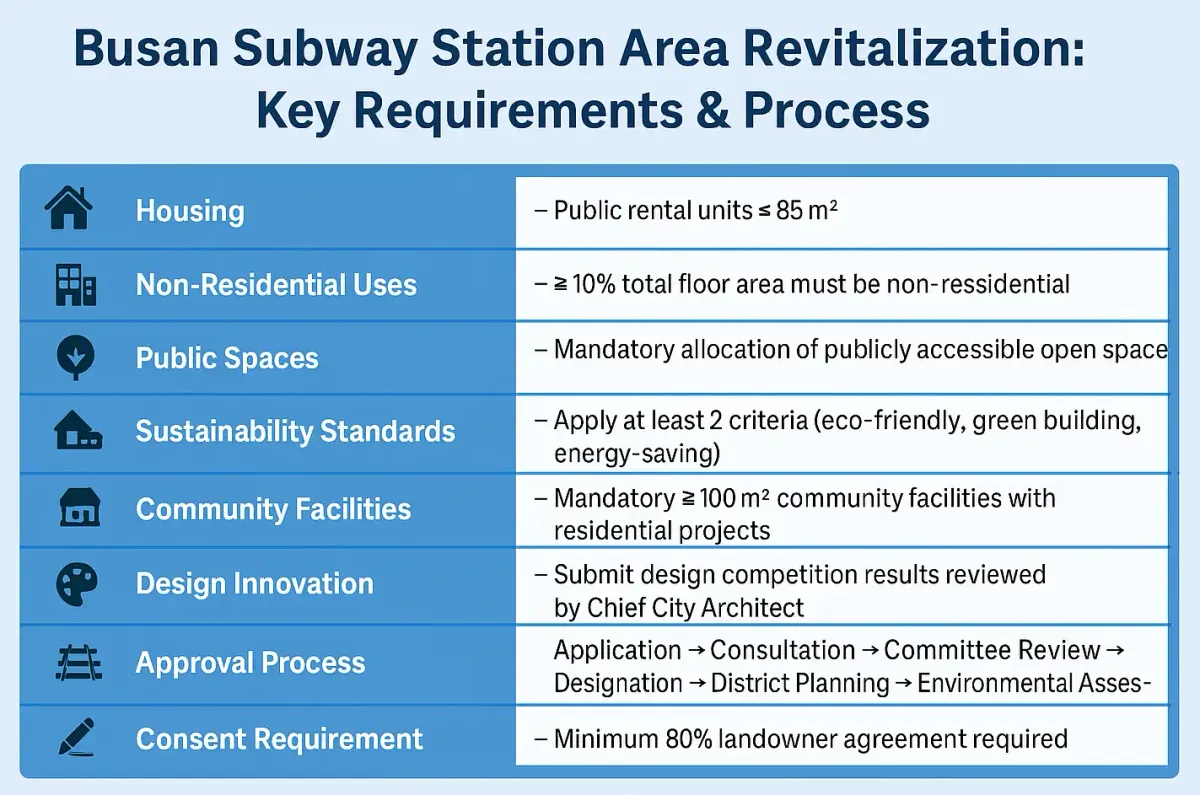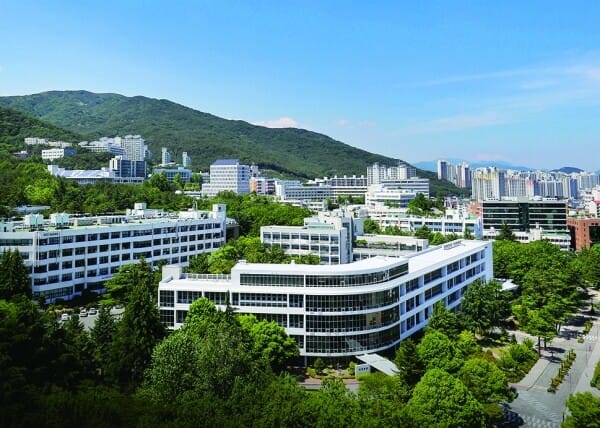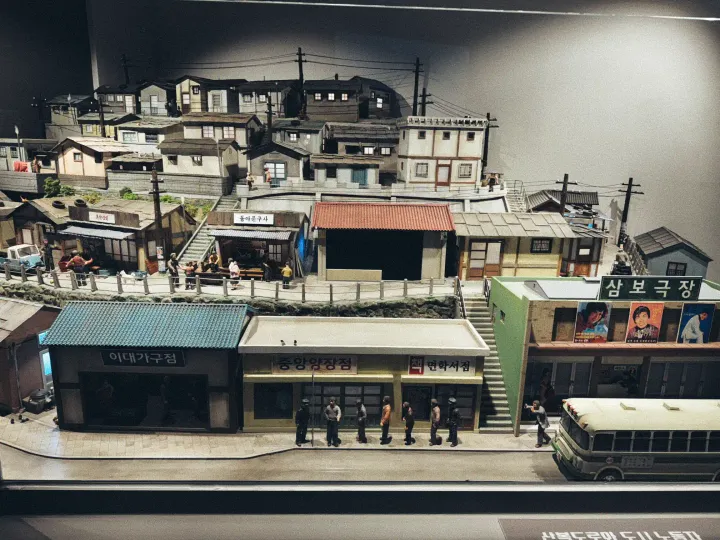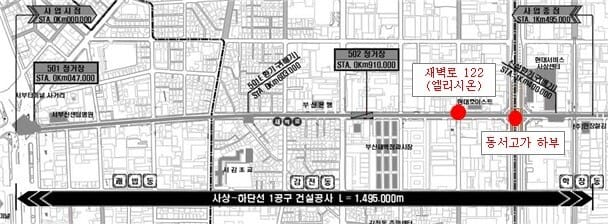Busan's Compact City Dream Risks Becoming an Urban Mirage
Busan plans to revitalize subway station areas with dense mixed-use developments. But with rising vacancies and declining demand, critics warn the strategy may backfire unless it prioritizes communities over construction.

BUSAN, South Korea — In June 2025, Busan City is set to launch its ambitious "Subway Station Area Revitalization Project," a sweeping initiative aimed at redeveloping low-density neighborhoods around subway hubs into vibrant, high-density mixed-use districts.
City officials frame the project as a cornerstone of Busan’s drive to become a “Compact City,” blending residential, commercial, and cultural functions to create dynamic growth anchors across the metropolitan area.
Under the plan, zoning restrictions will be relaxed to encourage private-sector investment, with public amenities such as social infrastructure and affordable housing introduced as part of negotiated contributions. The project promises to inject new life into underused spaces, stimulate local economies, and address longstanding urban challenges like downtown vacancy and suburban decline.
Yet as Busan doubles down on commercial expansion as a pathway to urban renewal, critics warn that the strategy may be built on increasingly shaky foundations.
In a city already struggling with high vacancy rates, shrinking consumer demand, and a fragile small business sector, the assumption that more commercial development will automatically revive struggling districts is being called into question.
"Revitalization today demands more than new buildings—it demands new ways of thinking about urban life," says one urban economist.
As the city moves forward, a deeper question looms: Can physical redevelopment alone rebuild the human and economic vitality Busan urgently needs?
Busan's Compact City Plan
Busan is preparing to launch an ambitious redevelopment initiative aimed at breathing new life into underused neighborhoods around its subway stations.
Dubbed the "Subway Station Area Revitalization Project," the plan forms a key part of the city's broader "Compact City" strategy to foster more concentrated, efficient urban growth.
| Category | Key Requirements and Process |
|---|---|
| Housing | - Public rental housing units must be ≤ 85㎡ - Some urban small-scale housing exempt |
| Non-Residential Uses | - Minimum 10% of total floor area for non-residential use - Ground floor activation with commercial facilities facing roads |
| Public Spaces | - Mandatory allocation of publicly accessible open spaces - Exempted from official FAR calculations |
| Sustainability | - Application of at least two criteria: eco-friendly, green building, or energy-saving design - Additional incentives for zero-energy building certification |
| Community Facilities | - Projects must include ≥ 100㎡ of community facilities unless exempted |
| Design Standards | - Submission of design competition results reviewed by Busan’s Chief City Architect |
| Approval Process | - Application → Consultation → Urban Planning Committee review → Site designation - District unit planning with citizen participation and environmental impact assessment |
| Consent Requirement | - At least 80% landowner agreement required for project advancement |
Busan City has established a detailed framework outlining mandatory housing provisions, public space requirements, sustainability standards, and approval procedures. While the regulatory framework seeks to balance private development with public interest, critics argue that the actual implementation may favor large developers and landowners unless stronger enforcement mechanisms are put in place.
At the heart of the project is a sweeping rezoning effort. Low-density residential areas near subway stations will be reclassified to permit mixed-use and commercial development, while floor area ratios will be expanded significantly to incentivize private-sector investment. In exchange, developers will be required to contribute public amenities such as parks, libraries, and transportation infrastructure, along with a small proportion of affordable housing units.
City officials argue that densifying areas around major transit hubs will counteract economic stagnation, mitigate the hollowing-out of traditional urban centers, and promote more dynamic, integrated communities. The vision is to create multifunctional urban nodes where housing, employment, leisure, and cultural life coexist within walkable distances.
To support the initiative, Busan plans to fast-track amendments to its urban planning guidelines and monitor the project’s implementation closely. Authorities have pledged to adjust the program based on periodic evaluations and citizen feedback.
Mayor Park Heong-joon has championed the project as critical to Busan’s future competitiveness, stating that it will help resolve long-standing issues such as rising commercial vacancies while establishing Busan as a "global hub city."
Why Busan's Subway Station Redevelopment May Fail to Revitalize Local Economies
While Busan's Subway Station Area Revitalization Project promises to create vibrant, high-density hubs around major transit stations, economic indicators and urban development patterns suggest that the city's optimism may be misplaced.
Across Busan, many areas already designated for commercial activity — including zones around Pusan National University Station, Yeonsan Station, and Nampo Station — are struggling with chronic vacancy rates. Recent data show that vacancy levels in some key commercial districts exceed 20 to 30 percent, highlighting a persistent oversupply of retail and office space even without the planned expansions.
Compounding the problem is the broader economic context. Small businesses, a traditional backbone of Busan’s local economy, have been battered by the aftermath of the COVID-19 pandemic, surging operational costs, and changing consumer habits.
At the same time, the city faces a shrinking population, with younger residents leaving for larger metropolitan areas and the overall demographic profile aging rapidly. These trends have led to a sustained contraction in consumer spending and a notable decline in everyday foot traffic, even in areas once considered bustling.
In light of these realities, critics argue that the underlying assumption of the Subway Station Area Revitalization Project — that increasing commercial supply will naturally generate economic demand — is fundamentally flawed. Rather than breathing life into struggling areas, the expansion of commercial zones risks deepening the problem of empty storefronts and underutilized spaces.
"Revitalization is not a matter of adding more square footage; it’s about sustaining the people and businesses that give neighborhoods their vitality," notes one urban economist.
Unless demand-side fundamentals are addressed — such as strengthening local entrepreneurship, supporting small businesses, and enhancing residential stability — critics warn that Busan’s ambitious redevelopment plans could exacerbate urban hollowing, rather than reversing it.
Who Benefits — and Who Loses — from Busan's Subway Station Redevelopment
As Busan pushes forward with its Subway Station Area Revitalization Project, questions loom over who stands to gain the most — and who might be left behind — in the city’s latest wave of urban transformation.
Foremost among the expected beneficiaries are large landowners whose properties fall within the rezoning areas. With low-density residential zones reclassified as commercial or mixed-use, the value of affected land is set to rise significantly, offering substantial windfalls to property owners without the need for major investment on their part.
Private developers are also well positioned to profit. By leveraging relaxed floor area restrictions and expanded development rights, they can maximize buildable space and potential returns, often without proportionate obligations to reinvest profits into the surrounding community.
Although the city mandates public contributions such as the creation of parks, community facilities, and limited affordable housing, these requirements remain modest relative to the scale of private gains.
Meanwhile, small businesses — once the economic lifeblood of Busan’s station areas — face a more precarious future. Rising land values and redevelopment pressures are expected to push up rents, making it increasingly difficult for independent retailers and service providers to maintain their presence.
In many cases, revitalized spaces may prioritize national franchises and luxury brands that can afford higher leasing costs, effectively displacing local entrepreneurs.
The social impacts extend to residents as well. Higher property values and commercialization could drive up the cost of living, squeezing lower- and middle-income families and potentially accelerating patterns of gentrification and demographic displacement.
Without stronger mechanisms to distribute benefits more equitably, the Subway Station Area Revitalization Project could end up entrenching inequality rather than resolving it, critics caution.
What Busan Can Learn from Global Subway Station Redevelopment Failures and Successes
Busan is not the first city to pursue an ambitious strategy of densifying and redeveloping areas around major subway stations. Across the world, similar efforts have produced a mixed record of success and failure, offering important lessons that could guide — or warn — Busan’s own urban transformation.
In Tokyo, efforts to concentrate commercial and residential activities around subway hubs have created some of the most iconic and dynamic districts in the world. Yet even in Japan’s capital, overbuilt zones such as parts of Shinjuku and Ikebukuro now struggle with severe off-peak hollowing, where daytime bustle gives way to nighttime emptiness. Critics note that without a balance of residential stability and community-focused amenities, station-centered developments risk becoming transient spaces, devoid of lasting social life.
Osaka offers a more cautionary tale. Despite major investments into revitalizing suburban railway hubs, areas such as Tennoji and Sakai failed to achieve sustained economic growth. Commercial overexpansion without corresponding increases in local demand led to high vacancy rates, declining rents, and a gradual erosion of urban vitality — a cycle that Busan may be in danger of replicating if underlying consumer and demographic trends are ignored.
By contrast, Singapore's approach to subway station area redevelopment has drawn praise for its careful integration of residential, commercial, and community spaces. Mandated quotas for affordable housing, strict caps on retail expansion, and early investment in public amenities have helped ensure that densification supports inclusive, livable communities rather than displacing them.
"It’s not density alone that drives success; it’s how that density supports the daily lives of people," notes one urban planning expert.
As Busan embarks on its revitalization efforts, these international experiences highlight a crucial truth: revitalization is not simply about building more — it’s about building better, and about building for people rather than for property metrics.
Busan's Future: Revitalization Must Focus on Communities, Not Just Construction
As Busan advances its Subway Station Area Revitalization Project, the stakes extend far beyond the construction of new buildings and the rezoning of underused land. What is truly at risk is the social and economic fabric that defines the city’s vitality — the small businesses, families, and communities that sustain its everyday life.
The belief that commercial expansion alone can revive struggling neighborhoods is increasingly out of step with today’s economic and demographic realities. Without robust demand, expanding retail and office space risks creating hollow landscapes of empty storefronts and transient foot traffic, deepening rather than solving the problems the city aims to address.
International experiences show that successful revitalization is rooted not just in density or development, but in people-centered planning — ensuring that growth serves the needs of residents, fosters inclusive communities, and strengthens local economies.
For Busan to truly thrive as a global city, it must resist the temptation to measure success by the number of towers built or the volume of land rezoned. Instead, it must commit to strategies that support affordable housing, protect local businesses, invest in public amenities, and nurture vibrant, livable neighborhoods.
"The future of cities belongs not to the tallest skyline, but to the strongest communities."
If Busan can realign its urban vision to focus on people rather than property, its subway station revitalization efforts could yet become a model for sustainable, inclusive urban renewal — and a beacon for other cities navigating similar crossroads.



Comments ()